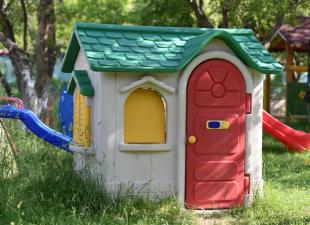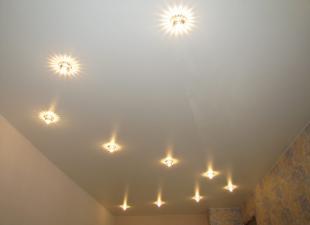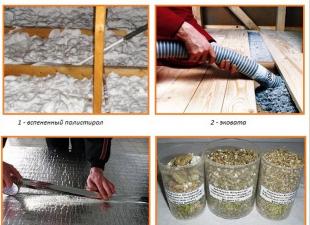Perhaps there is no such person who would not try to save on fuel for heating. This is possible by using waste oil heating stoves. They can be supplied with any oil that can burn: transmission, diesel, machine, confectionery and vegetable. As a result, there will be no problems with the oven. Below we will tell you how to build a homemade waste oil oven using the cheapest materials available.
How homemade oil ovens work
If you set fire to any used oil, it will have a strong fume and smell unpleasant. Therefore, direct combustion does not apply. Volatile elements are initially vaporized and then incinerated. This approach forms the basis for the operation of the furnace of this design.
There are oil ovens with two combustion chambers. The lower chamber is designed to heat the fuel with its subsequent evaporation. Combustible vapors are directed upward, saturated with oxygen when passing through a pipe with holes. Getting into the upper part of the pipe, the mixture ignites, and its afterburning occurs in the second chamber. This releases more heat with less smoke.

The second method of splitting heavy fuel into flammable components is more efficient, but also more difficult to implement. To obtain the desired evaporation efficiency, a metal bowl is mounted in the lower chamber. After it is heated, the waste oil evaporates.
In order for the combustion process to be extremely effective, oil must be fed into the lower chamber in small portions, in a thin stream or by the drip method. This technology is called drip feed (in more detail: ""). Such ovens have several versions, some of which we will describe below.
Pros and cons of such ovens
The main advantage of oil stoves is that they can use waste oil as fuel, which would be disposed of. With the correct technology for the manufacture of the furnace, after the combustion of oil, practically no harmful elements are emitted into the atmosphere.
Additionally, the following advantages can be noted:
- simplicity of design;
- high efficiency;
- minimum costs for equipment and fuel;
- the ability to use oils of any origin;
- oil can contain up to 10% of impurities.
However, there are also significant negative qualities. Firstly, if the technology is not followed, the fuel will partially ignite. As a result, harmful vapors can accumulate in the room, which can threaten dangerous consequences for humans. Therefore, a prerequisite is to equip a room with an oil boiler with a ventilation system.

It is worth highlighting the following additional disadvantages:
- to obtain sufficient draft, the chimney must be at least 500 cm high;
- the roof and chimney should be serviced every day;
- difficult ignition: first you need to heat the bowl, and only after that fuel is supplied;
- difficulty in manufacturing a boiler with the ability to heat water.
In view of the features described above, such stoves are practically not used as heating for residential buildings.
Application area
Waste oil heating furnaces of simple designs are aimed at heating the air. They are also called heat guns, heat generators or heaters. They are capable of overdrying the air, therefore they are practically not used for heating living quarters. Their main purpose is to heat technical premises, such as: car washes, service stations, garages, workshops, as well as warehouses where there are no flammable substances.

If the stove is modified by installing a coil for heating water, or a water jacket is built, then it can already be used as a water heating unit.
Since you are interested in the question of how to make an oil oven with your own hands, below are detailed instructions for this process.
Stove on waste oil from a pipe with your own hands
It is easiest to make a furnace body from a gas or oxygen cylinder, pipe or barrel with thick walls (read: "How to make a working furnace from a gas cylinder - theory and practice"). Such a unit will be able to produce a maximum of 15 kW of heat. It will not be possible to exceed this threshold, since due to a violation of the thermal regime, the boiler will begin to smoke, and this is quite dangerous.
First, we need to create a corpus - this is done in the following sequence:
- We take a pipe with a cross section of 21 cm with a wall thickness of 1 cm and a height of 78 cm.
- To make the bottom, we take sheet steel with a thickness of more than 0.5 cm.After cutting out the bottom with a diameter of 21.9 cm, we weld it on one side.
- Next, legs are welded to the bottom, which can be made from bolts.
- Now you need to make a viewing window, which is located at a distance of 8 cm from the bottom. It is necessary to observe the flare-up of the bowl at the start. The size of the window is determined based on personal preference. The door is made from a cut piece of pipe, to which a thin shoulder is welded. To close the door tightly, an asbestos cord is laid around its perimeter.
- A flue pipe with a section of 10.8 cm and walls with a thickness of 0.4 cm is welded on the opposite side of the body, 7-10 cm from the top.

We make a cover:
- We take a piece of metal 0.5 cm thick and cut out a circle with a diameter of 22.8 cm.
- Along the edge of the circle, we weld a collar of 3 mm metal with a height of 4 cm.
- In the center of the cover we make a hole with a section of 8.9 cm, and cut a hole with a diameter of 1.8 cm on the side. The second hole is necessary to obtain an additional viewing window. It requires a cover, which is also a safety valve.
Now, for the blowing furnace, it is necessary to make a pipe for transporting air and fuel:
- You will need a pipe with a cross section of 8.9 cm, a wall thickness of 0.3 cm and a length of 76 cm.
- We drill 9 holes around the circumference, while 5 cm should be retreated from the edge, and their diameter should be 0.5 cm.
- Having stepped back 5 cm, we make two more rows, 8 pieces each, of holes with a cross section of 0.42 mm.
- After another 5 cm, 9 holes are drilled in the fourth row with a section of 0.3 cm.
- On the same side along the edge, make 9 slots 0.16 cm thick and 3 cm high. For this, you can use a grinder.
- From the opposite end of the pipe, stepping back from the edge of 0.5-0.7 cm, we make a hole with a section of 1 cm.
- We put the fuel supply pipe into the prepared hole. The thickness of its wall should be 0.1 cm, and the cross-section should be 1 cm. It should be on the same level with the air supply pipe. Its bend and length are determined by the location of the fuel container.
- The air and fuel supply pipe is welded to the cover. It must be positioned in such a way that 12 cm remains from it to the base of the case.

It's time to make a fuel bowl for the supercharged test stove:
- First, we take a pipe with a cross section of 13.3 cm and a wall thickness of 0.4 cm, cut off a piece 3 cm long.
- Now we cut out a circle with a diameter of 21.9 cm from 2 mm sheet steel.
- Having welded it to a piece of pipe, we get a bowl into which we will supply fuel.
We begin to assemble a garage oven for testing:
- We retreat from the bottom of the case 7 cm and mount the bowl inside it.
- We mount the cover together with the fuel supply device.
- We install the chimney on the chimney. The chimney must be located strictly vertically, even slight slopes are prohibited. The part of the pipe that remains in the room can not be insulated, and the part that goes outside is better insulated.
After the oil nozzle for the stove and the oil block are installed, proceed to testing. First, a certain amount of paper is placed in the bowl, a flammable liquid is added and set on fire. They switch to oil supply after the paper has practically burned out.
Taking into account the fuel consumption of 1-1.5 liters per hour, it will be possible to heat up to 150 square meters of premises.
Homemade mini oven for testing
It is quite easy to build a mini-oven for working off with your own hands. Such furnaces are small in size and weigh only 10 kg, while they consume about 1.5 liters of fuel per hour with the release of 5-6 kW of heat. If the power is increased above these values, the furnace may explode. This is an indispensable mini-oven for working off a garage (read: ""). It will make it possible to quickly warm up the room in severe frosts. It is not only compact, but also very economical, which is why it is also called garage.
The fuel tank of this stove has a bottom and a top in the form of a standard 50 liter gas cylinder. As a result, we have very reliable designs. The tank can be made from another similar container with similar dimensions: diameter 20-40 cm with a height of about 35 cm.

In addition to the fuel tank, you will need to build a pipe with a wall thickness of at least 4 mm to mix fuel with air. The cones can be welded from structural steel with a thickness of 4 mm or more.
The dimensions of the furnace available in the drawing can be edited in one direction or another, but not more than 2 cm. Particular attention should be paid to welding seams in funnels.
The length of the chimney should not exceed 350 cm, otherwise, due to excessive draft, fuel will begin to flow into the chimney, which will increase fuel consumption and impair heat transfer.
Miracle oven on working off
This version of the stove is quite popular for installation in summer cottages and in garages. It has a small comfortable stove equipped with round or square burning zones. The design of the furnace is so successful that there are even industrial versions of its design. On sale you can find such a stove with the name Ritsa.
Factory supercharged units
There are not only self-made furnaces for working off with pressurization, but also those that are manufactured at enterprises. There are import options and Russian ones. Imported boilers run on liquid fuel. Due to the principle of pressurization, the oil in them is sprayed into tiny droplets, which are ignited after being combined with air. Imported stoves work according to the same principle, but they are equipped with a special burner, in which the fuel is first heated up and only then sprayed.

In Russian stoves, the first principle is most often applied, in which fuel is supplied to a hot bowl, which later, turning into gas, combines with air and ignites.
Devices with the following names have this principle of operation:
- Gecko... Manufactured in Vladivostok. They are available with a capacity of 15, 30, 50 and 100 kW / hour. Such stoves can heat water, so they can be built into water heating systems.
- Typhoon... Such furnaces are sold by the Belamos firm. They are designed to heat the air. Two models are proposed - Typhoon TM 15 and TGM 300, which are capable of delivering 20-30 kW / h.
- Herringbone-Turbo... The oven can be purchased with a capacity of 15 and 30 kW. They are also designed to warm up the air, but there is a possibility to make a water jacket.
- Teplamos... There are capacities from 5 to 50 kW / h. They are heat guns. To start them, the plasma bowl is first heated with electricity, and after reaching a certain temperature, they switch to supplying fuel and air to the combustion area.
Drawings and diagrams
A huge number of different drawings have been developed for the construction of oil furnaces. By looking at just a few of them in more detail, you can get an idea of their design to create a safe and efficient working furnace yourself.
 parlini.ru Repair of an apartment, a summer residence and a house.
parlini.ru Repair of an apartment, a summer residence and a house.


